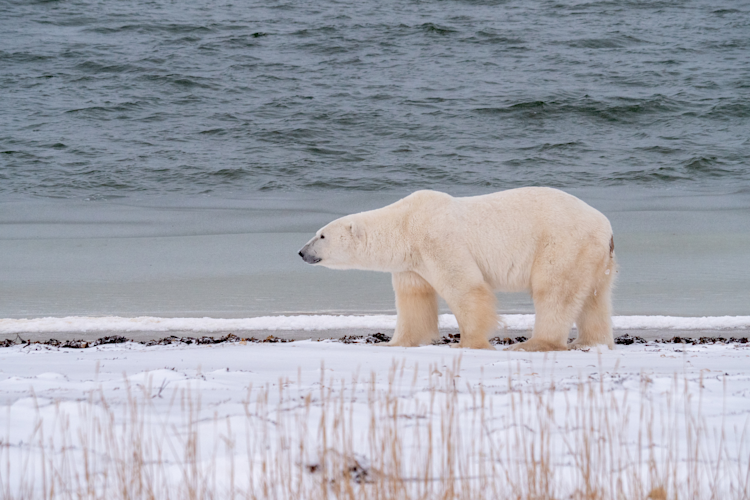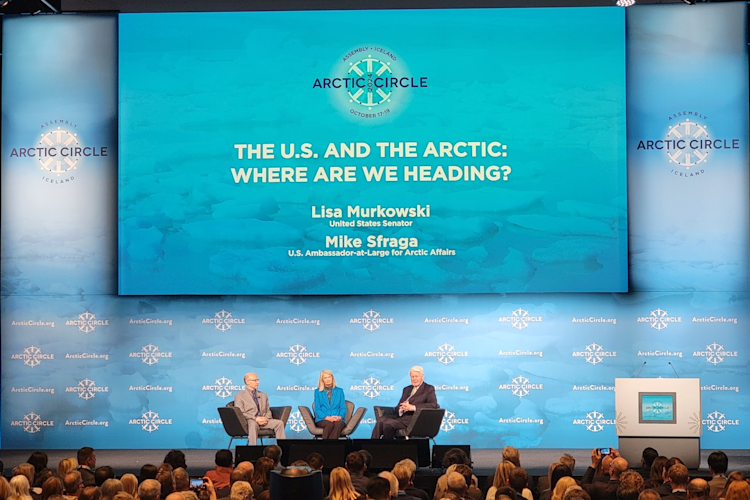International Polar Bear Day is coming soon: February 27th. On this awareness day, we draw attention to the challenges polar bears face in a warming Arctic and the urgent need to act on climate.
But what are the most viable climate solutions? Dr. Katharine Hayhoe, a world-renowned climate scientist, shares her thoughts below. Her approach is broad, positive, and inclusive, giving everyone a way to plug in.
We need climate solutions that will:
Generate energy from clean sources that don’t produce carbon dioxide and other heat-trapping gases—because fossil fuel extraction and combustion is the number one cause of climate change, responsible for about two-thirds of the problem.
Reduce heat-trapping gas emissions from other important sectors, like agriculture, land use change, industrial processes, wastewater treatment, and more—because these are responsible for the remaining third of the problem.
Help us use our resources more efficiently—because did you know that the average U.S. household wastes $165 per year, for a total of $19 billion, on “vampire” power, and one-third of all the food grown world-wide is wasted?
Suck some of the carbon dioxide we’ve produced back out of the atmosphere and put it into the soil, where it helps restore the land, or turn it into fuel, or other useful products.
There’s no one silver bullet that will fix it for us: but there is a lot of silver buckshot.
And the very best type of buckshot are solutions that fix other things at the same time: like increasing clean energy use, which grows the local economy, reduces air pollution, and increases energy security; reducing food waste, which also tackles hunger; and my personal favorite, educating women and girls, which reduces infant mortality, increases economic security, and allows them the freedom to choose how many children they have.
For a truly inspirational list of viable, practical, and beneficial climate solutions, please check out Project Drawdown.
And as for how to implement these solutions, the answer is simply: at all levels.
Simple solutions we implement in our own lives, our homes, our communities and our organizations. We know they won’t make a dent in the global carbon budget, but they sure as heck can make a dent in our own consciousness of this issue and that of those around us and give us the hope we need to make a difference in this world, as well as giving us the oomph we need to chivvy and encourage our elected leaders to do their job. Exhibit A, climate scientist Peter Kalmus and his vision to change the way he and his family lives. Exhibit B, the amazing churches and congregations that are taking action through Interfaith Power and Light’s Cool Congregations program.
Regional solutions implemented across a business, an industry, a city, a state or a province. From giant Walmart, the richest corporation in the world, which is aiming for 50% clean energy by 2025 and leading an effort to cut a gigaton of carbon from the world’s supply chain; to tiny Georgetown, Texas, which decided to go 100% clean energy after a student initiative at the local university paved the way and showed how much money they’d save.
And yes, national and international solutions as well, such as the country of Ireland, that’s chosen to divest itself of its fossil fuel investments; Canada, that’s put a price on carbon; India, that’s replacing more than three quarters of a billion light bulbs with LEDs; Bhutan, that’s maintained and expanded its forests (including setting the record for the most trees planted in one hour, 50,000) such that they absorb three times more carbon than its population emits; and of course the Paris Agreement, where countries commit to the reductions we need to make sure that we are able to prepare for and adapt to the impacts that will occur.
When it comes to fixing climate change, we need all options on the table and all hands on deck.
This piece was originally posted on in a forum on Quora and has been reprinted with Katherine’s permission.
















